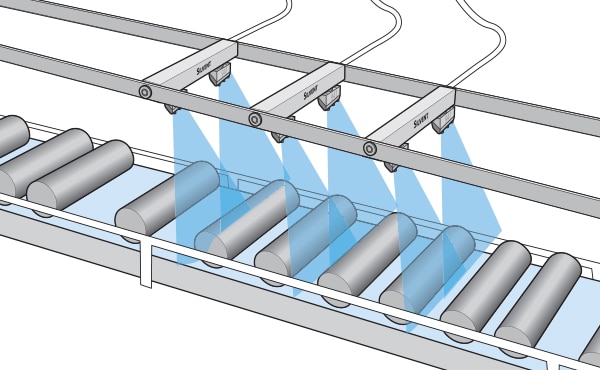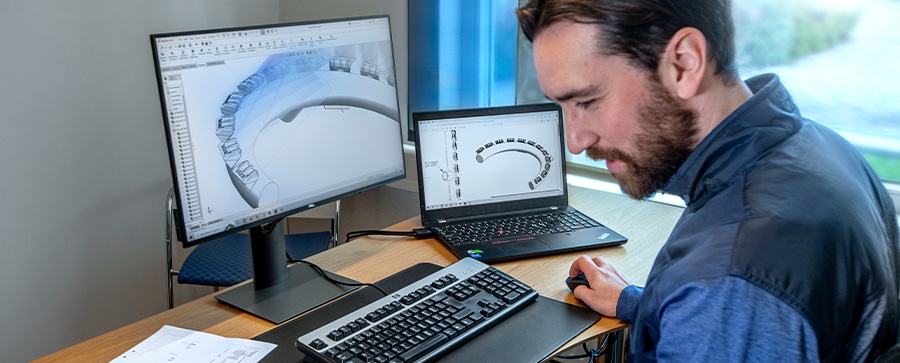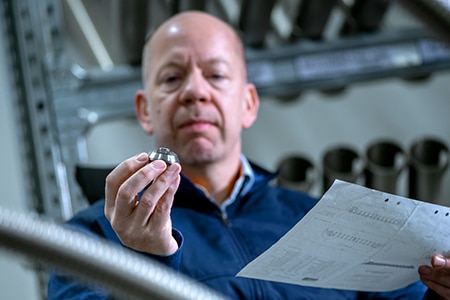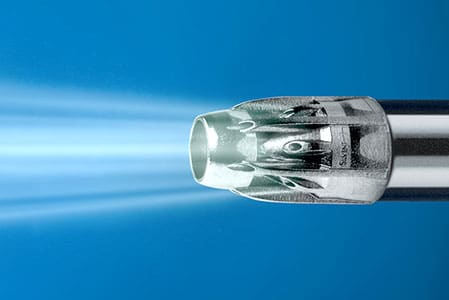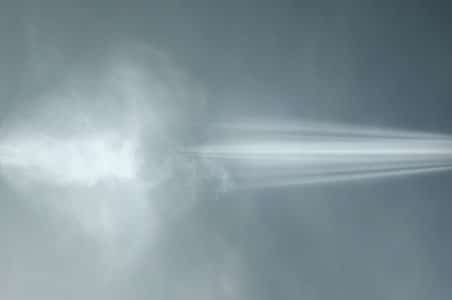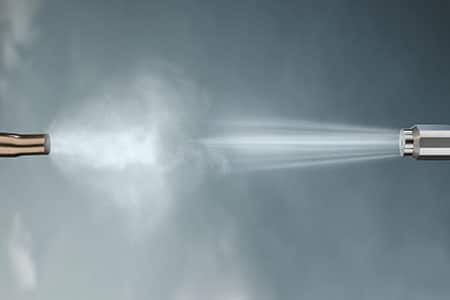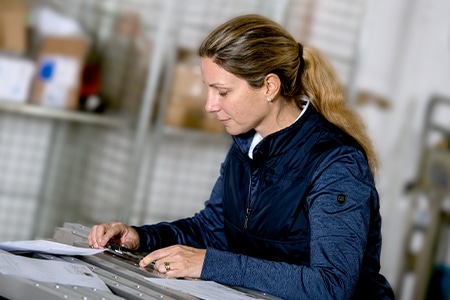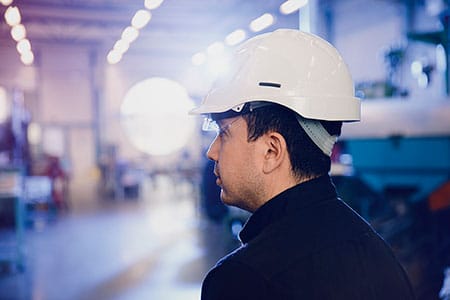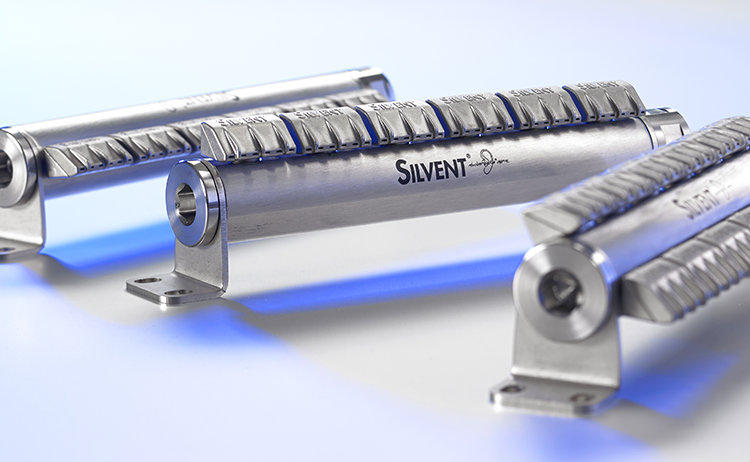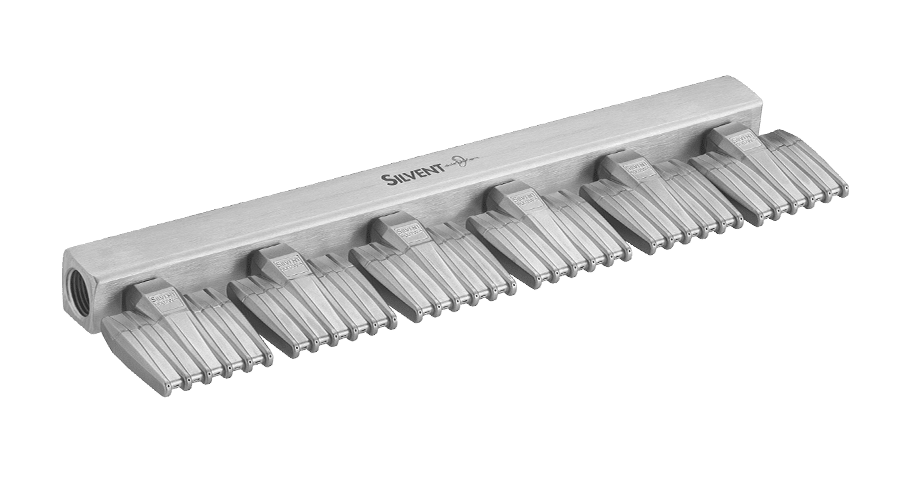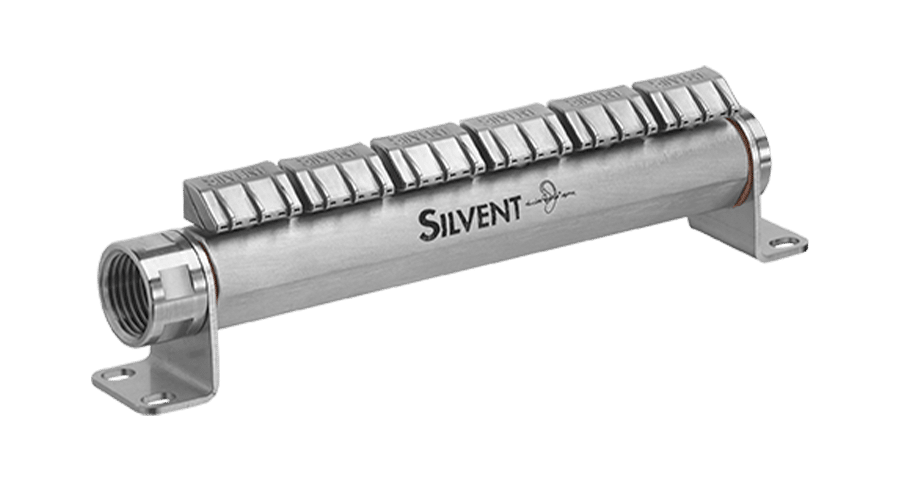Efficient, customized air knives for blowing with compressed air
Air knives are often used to blow away fluid, dirt, swarf etc. from a surface or an object, but can also be used to create an air curtain.
Two good reasons for installing Silvent air knives
Installing an air knife for blowing with compressed air is often effective when the object has a large cover width. All Silvent air knives have the optimum combination of high blowing force, low energy consumption and low sound levels.
Energy efficient air knife
There are major savings to be made when blowing with compressed air. Open pipes are often used for blowing with compressed air in fixed installations. In the long run, this is an inefficient and energy intensive method, as open pipes cause turbulence. Accordingly, to increase efficiency and reduce energy consumption, the air knives used should reduce turbulence and utilize the compressed air optimally.
All of Silvent’s air knives optimize the use of compressed air, reduce turbulence and sound levels. This is possible thanks to Silvent technology, which creates a uniform, smooth and straight so-called laminar air jet. The specially designed air knives allow the compressed air to be used optimally and for less energy to be wasted creating turbulence. This makes it possible to save both energy and money.

Improve your manufacturing industry
Silvent’s air knives are a more efficient alternative to open pipes, self designed air knives and air nozzles, if the blowing application requires a large coverage width. It is often difficult to get a good blowing result if the object requiers a wider coverage width. Therefore, Silvent has developed air knives that generate an evenly distributed coverage width and an effective blowing force.
Silvent’s application engineers possess unique expertise in the field of blowing with compressed air and they help companies around the world with industry-specific applications on a daily basis. Today, Silvent’s products are used to increase efficiency, lower sound levels and optimize the use of compressed air in more than 90 countries. This is possible thanks to our combination of extensive application experience and unique products.
Silvent’s range of air knives comprises both standard products and custom solutions. The standard products were designed for use across a spectrum of short to long blowing distances and are therefore not quite as efficient as our custom air knives. Silvent’s custom air knives are known as SILVENT 300™ and they are optimized for each unique application. Silvent’s application engineers work entirely according to the customer’s needs and requirements when designing SILVENT 300™.
Silvent’s engineers will be happy to share their know-how to achieve the best possible solution. Contact one of our representatives or fill in the contact form below, and we’ll get in touch with you.



